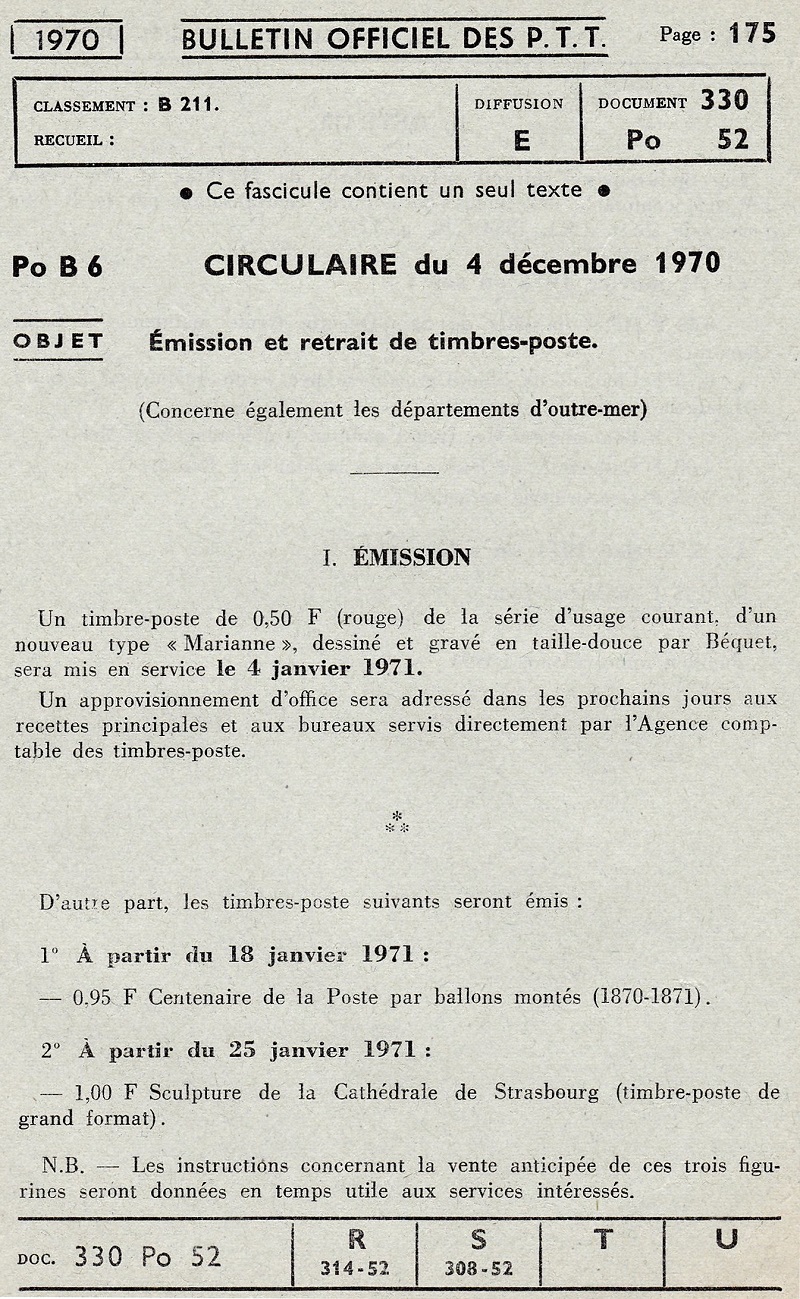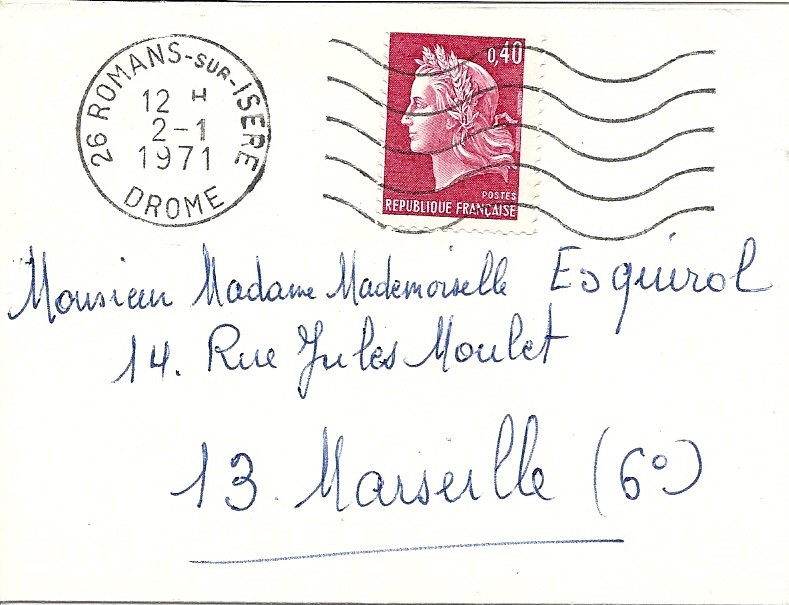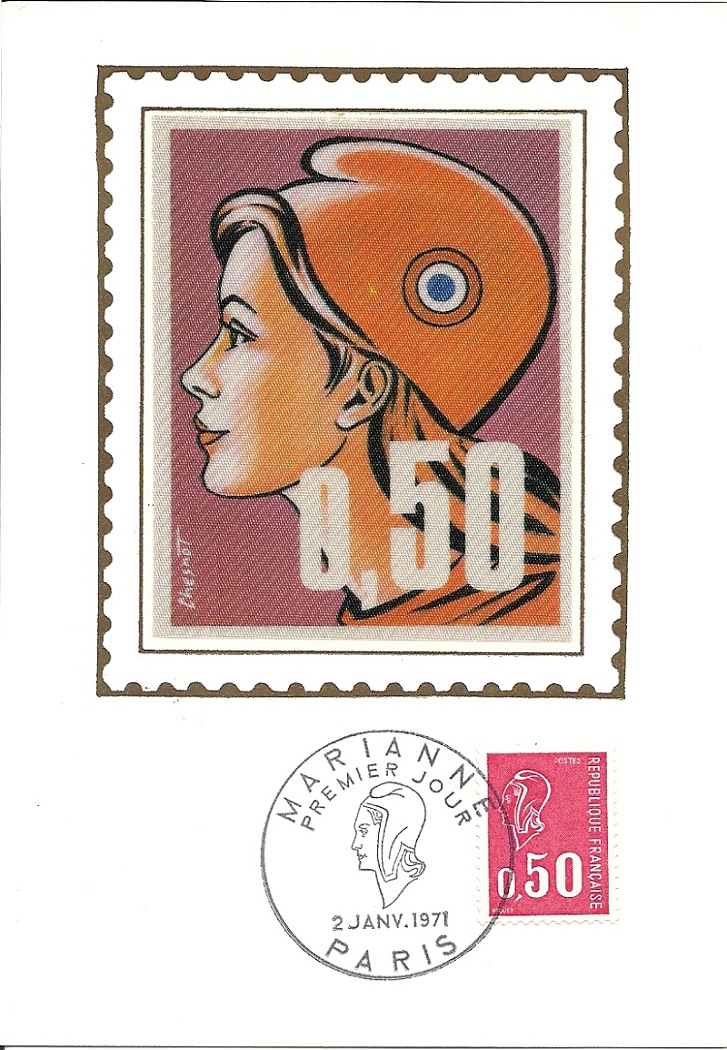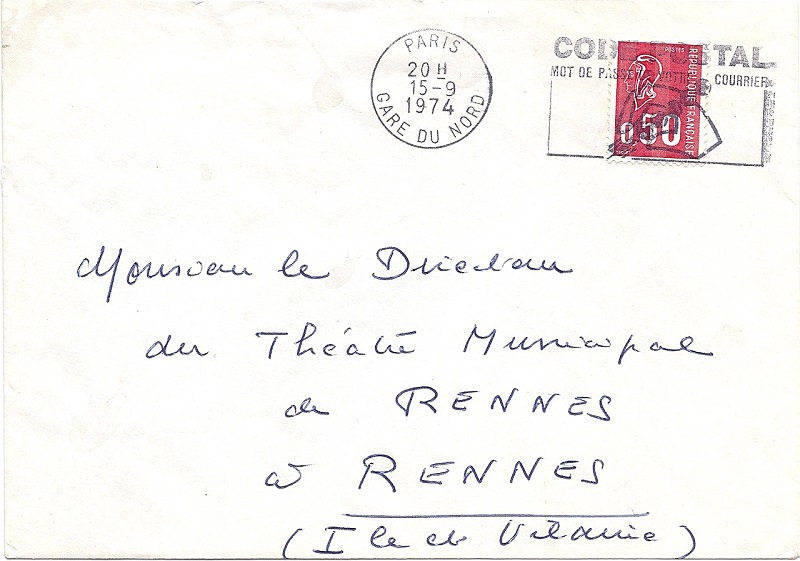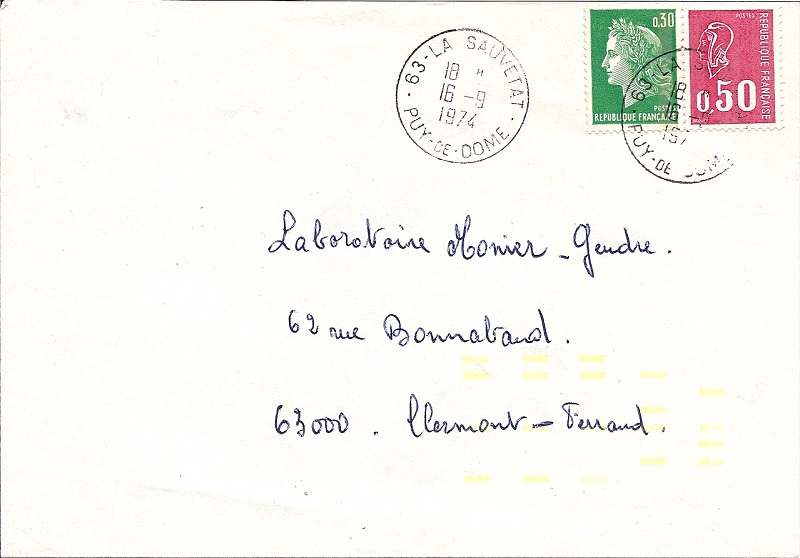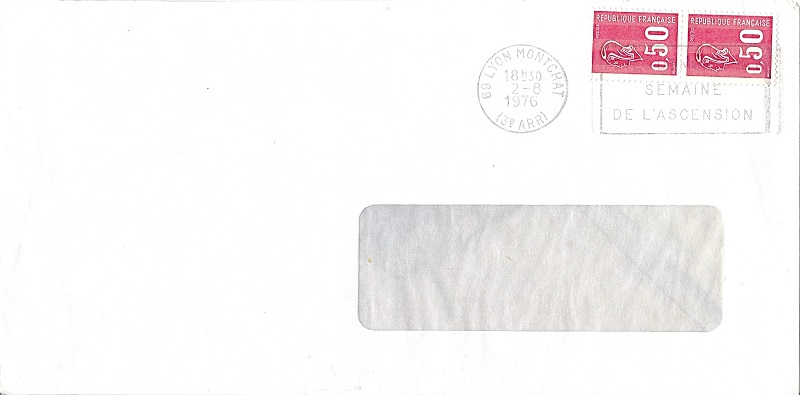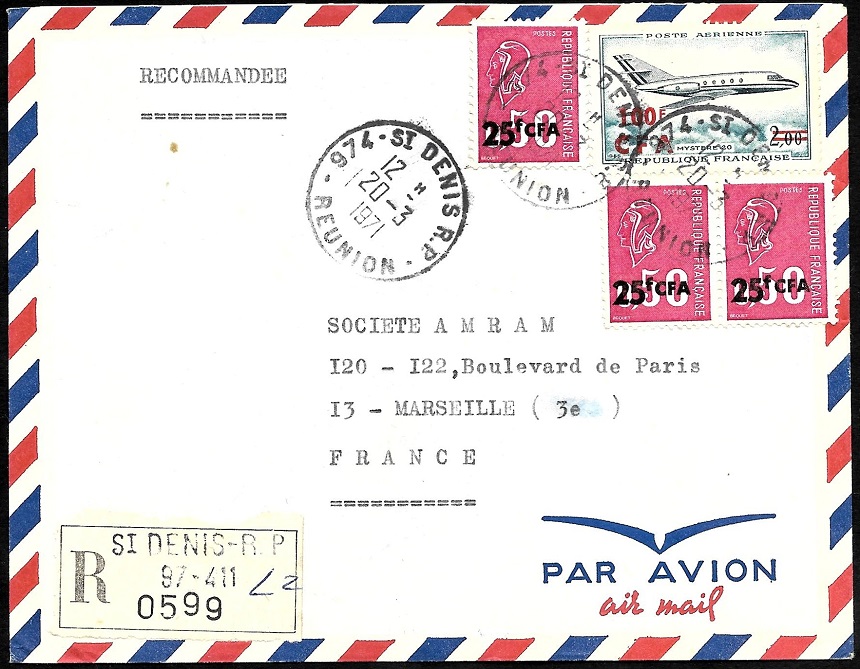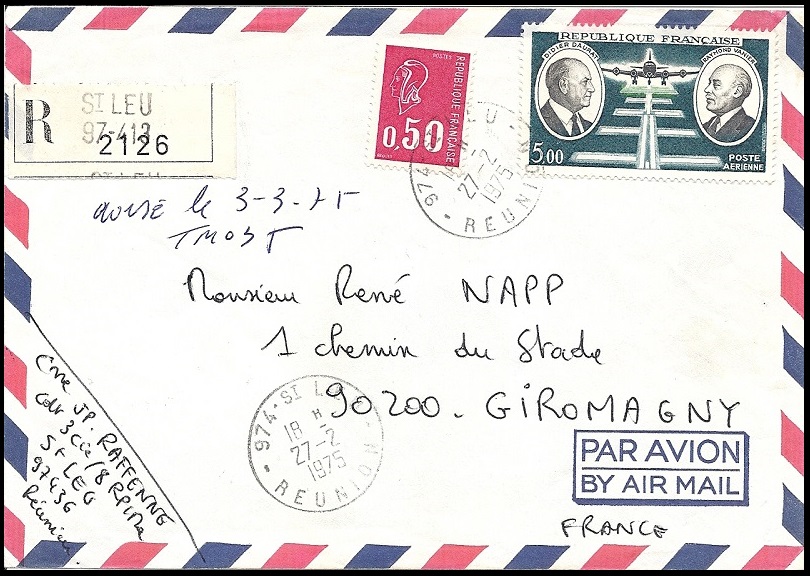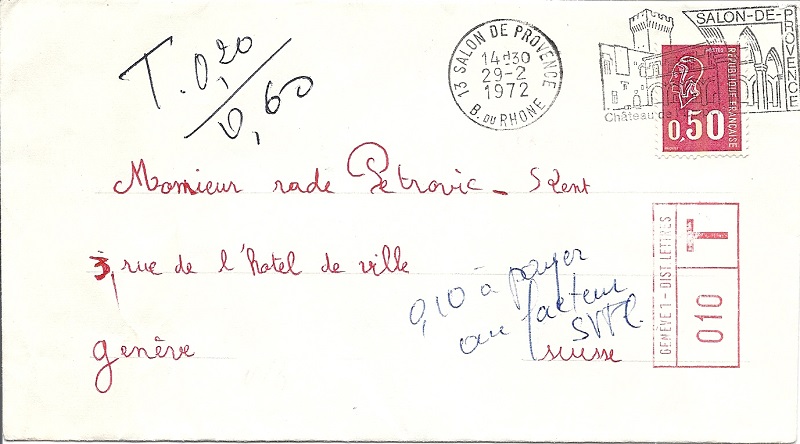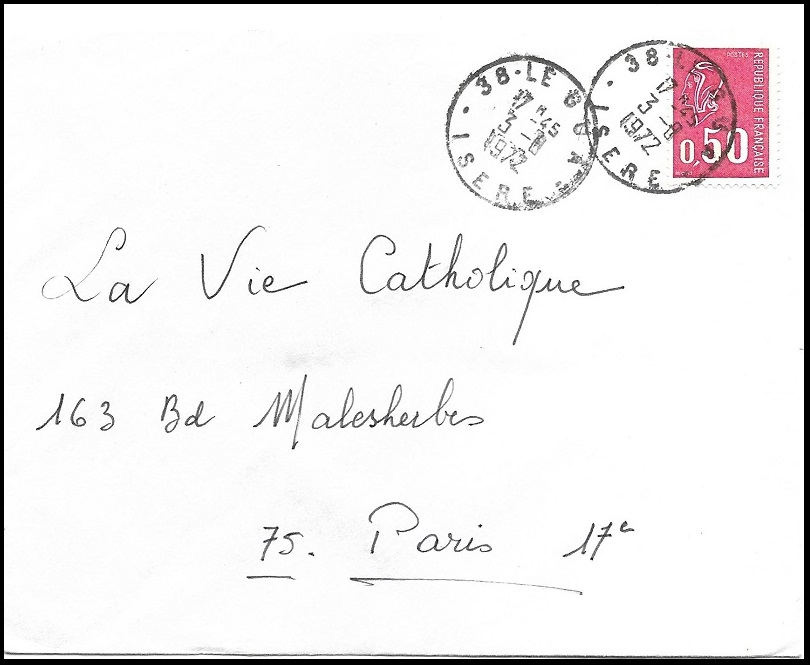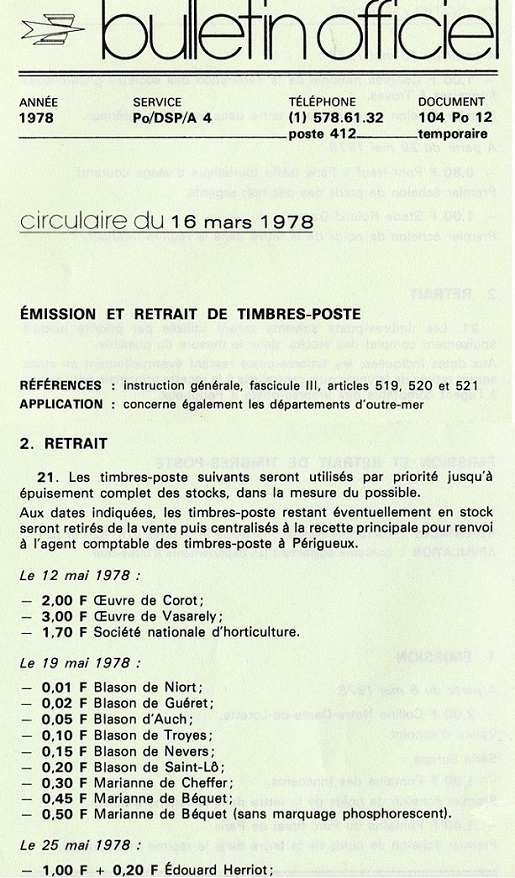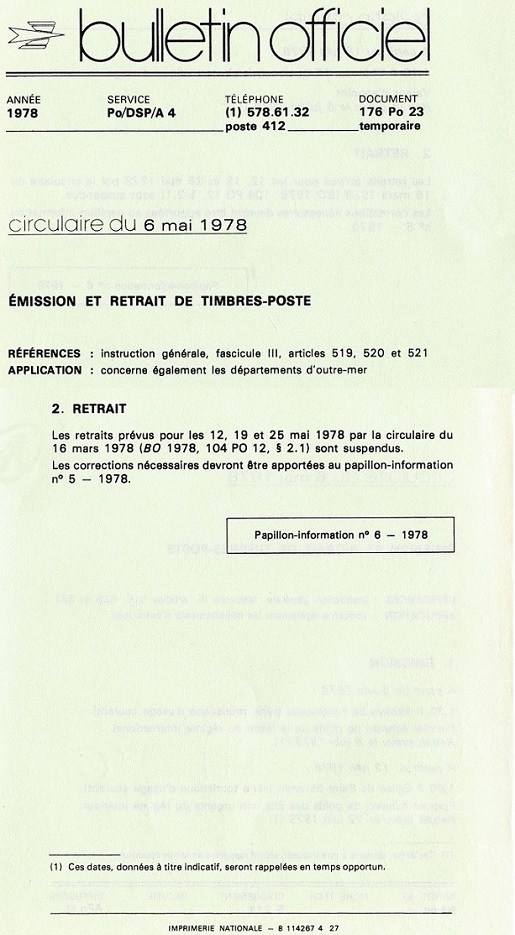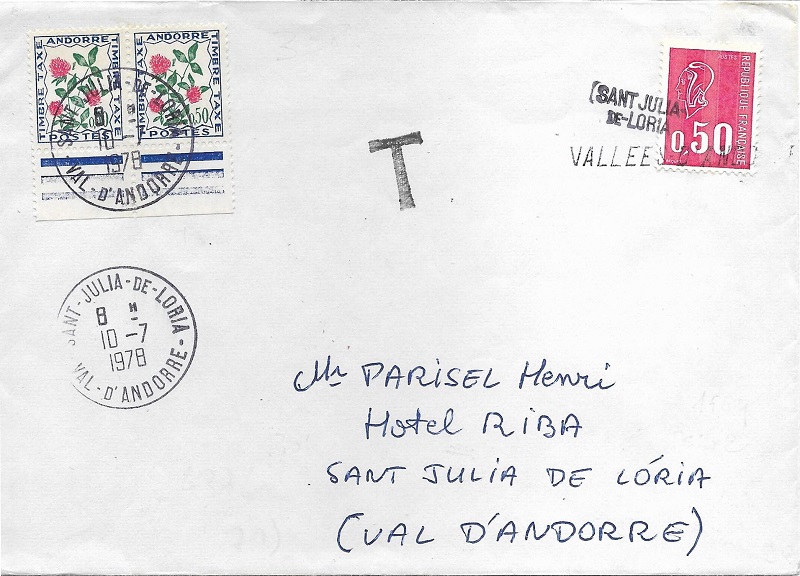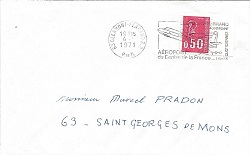
Introduction
The stamp 0.50 F Marianne de Béquet was issued on 4.1.1971 as shown in the circular below:
Issued on the event of the postal tariff change of 4.1.1971, the stamp 0.50F Marianne de Béquet corresponded to the urgent letter tariff in the new tariff. It was also used for the tariffs of 16.9.1974 and 2.8.1976, in particular as an additional value.
Let us remind (cf. The aspects of the 0,50 F Marianne de Béquet stamp) that the stamp 0,50F Marianne de Béquet was issued in the form of sheets, booklets and coils and that, for every presentation, there are stamps without phosphorescent band or with 3 phosphorescent bands.
In what follows, we will supply the known information about the dates of the issue and the dates of withdrawal of all these stamps.
Stamps from sheets
Stamps without phosphorescent band and not overprinted
Postage rate on 4.1.1971
Early sale emitted in Paris R.P., Paris 6 and Paris 41 on January 2nd, 1971, the stamp 0,50 F Marianne de Béquet without phosphorescent band was put on general sale in the whole France on January 4th, 1971.


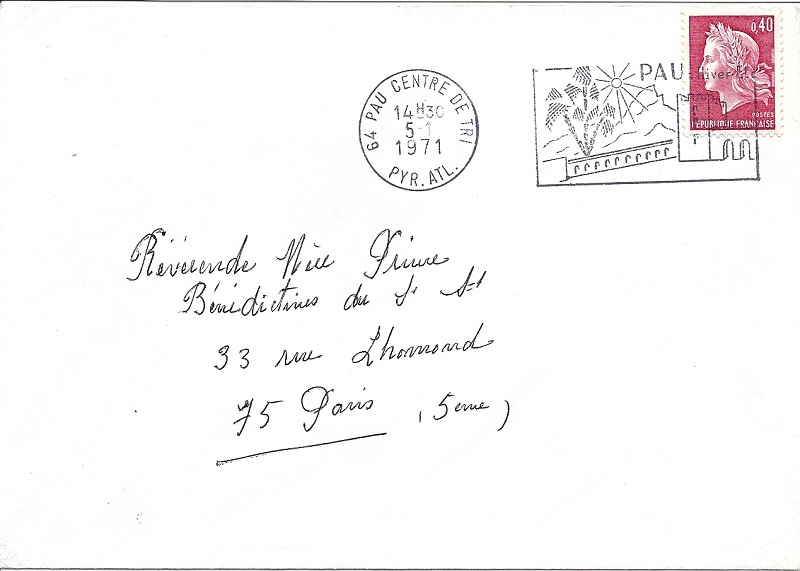
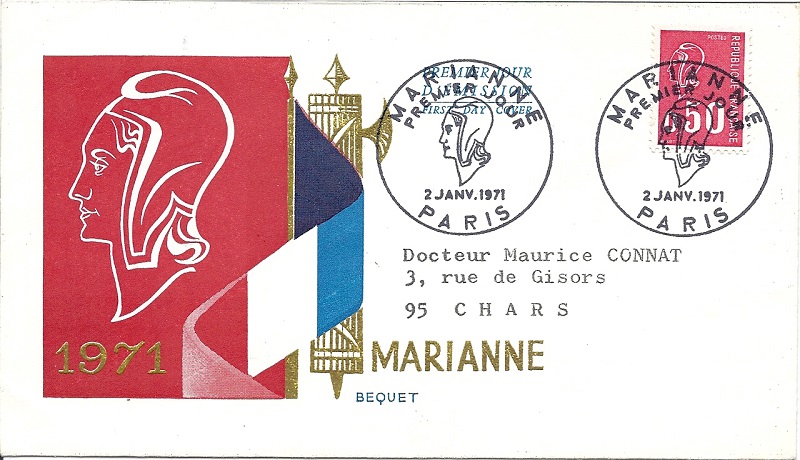
Postage rate on 16.9.1974

Postage rate on 2.8.1976
Stamps without phosphorescent band and overprinted 25F CFA
The stamp 0,50 Marianne de Béquet overprinted 25F CFA was put on early sale in St Benoît in La Réunion on January 16, 1971 and on general sale on January 18, 1971. From January 1st, 1975, stamps overprinted in CFA francs were removed and replaced by stamps in French francs.
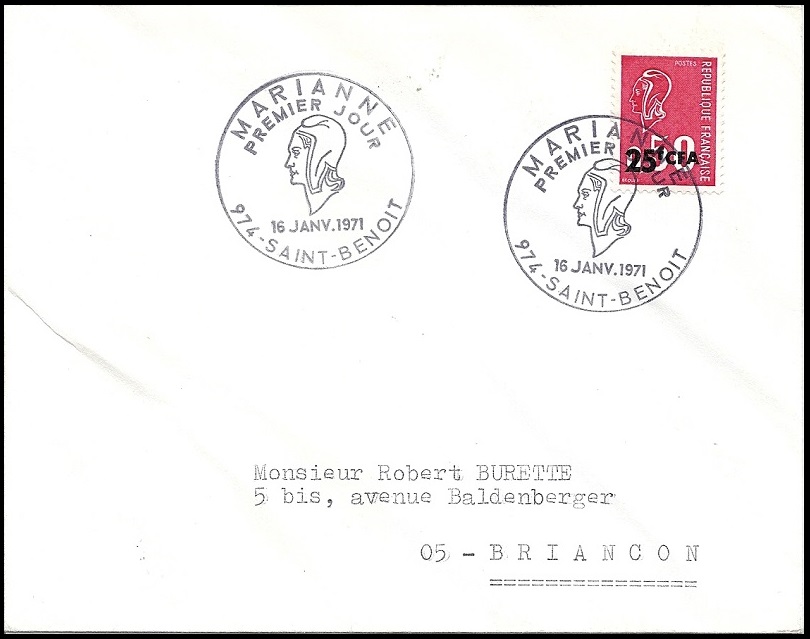
Stamps with 3 phosphorescent bands
The stamp with 3 phosphorescent bands was sold from 4.1.1971 in the post offices of Clermont-Ferrand and in the philatelic service of the Post Office in Paris.

On 1.2.1972, this stamp was sold in the following departments: Ain, Alpes-Maritimes, Bouches-du-Rhône, Isère, Loire, Loiret, Puy-de-Dôme and Rhône and on 1.6.1972 in the departments of Gironde, Loire-Atlantique, Meurthe-et-Moselle and Moselle. For the other departments, none official announcement was made (to my knowledge).
Let also remind (cf. Made printings of the stamp 0,50F Marianne de Béquet on TD6 presses) that the first stamps 0,50F Marianne de Béquet with phosphorescent bands had type A bands. They were printed during the 4th printing on the press TD6-1 beginning on 15.12.1970.
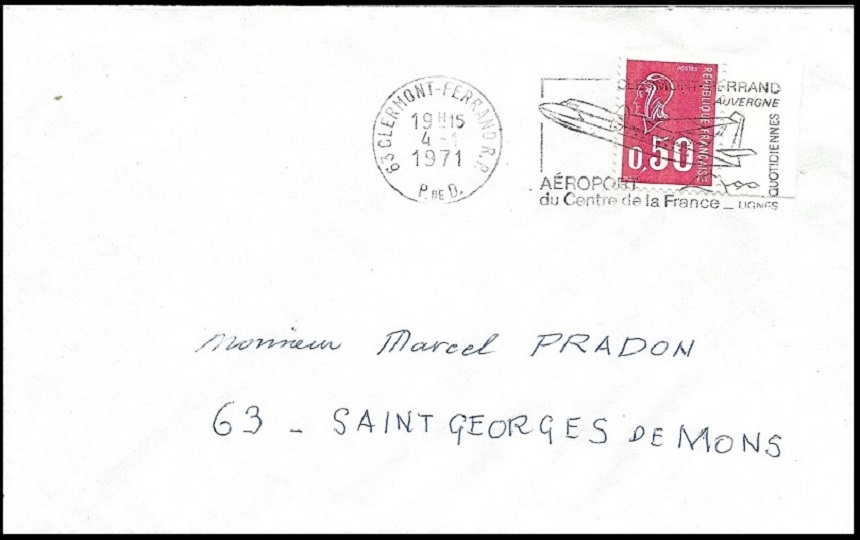
On mouse-over, we can see a photo under UV of the stamp showing the 3 type A bands.
The first printing with type D phosphorescent bands was made on 16.1.1973 (21th printing on the pres TD6-4 with the cylinder V).

On mouse-over, we can see a photo under UV of the stamp showing the 3 type D bands.
The first printing with type B phosphorescent bands was made on 12.3.1973 (23th printing on the press TD6-6 with the cylinder P).
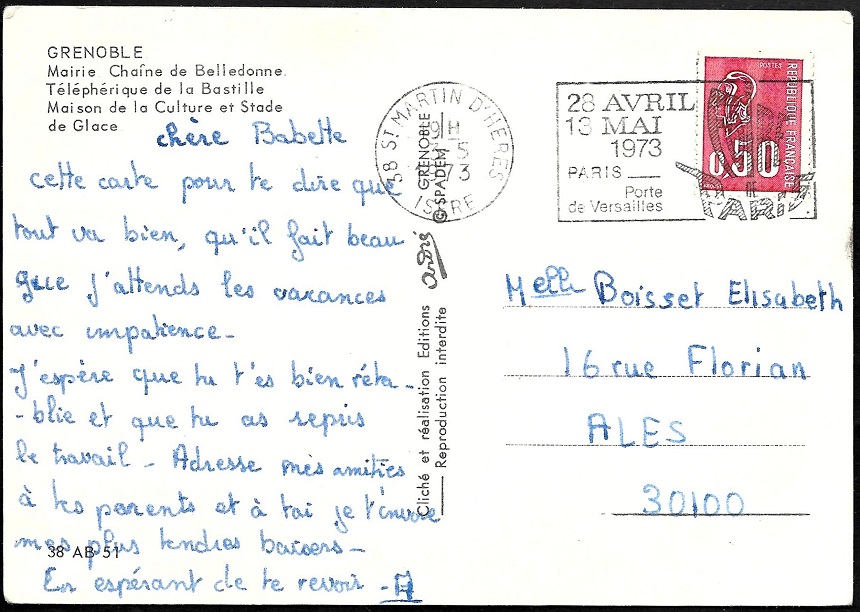
On mouse-over, we can see a photo under UV of the stamp showing the 3 type B bands.
Withdrawal of the stamps
The withdrawal of the stamps 0,50F Marianne de Béquet was the subject of four publications in the Bulletin Officiel des P. & T., with two announcements of dates, a cancellation and finally the final announcement, as evidenced by the four montages made from the Bulletin Officiel des P. & T. presented below:

Finally, stamps from leaf were withdrawn from sale on 7 July 1978.
The stamp on the above letter was not franked at departure. It was cancelled on arrival by a Saint Julia de Loria’s linear mark and the letter was taxed on July 10, 1978 (the rate of the not urgent letter at this date is of 1,00F, hence a tax of 1,00F). July 10, 1978 was a Monday and it is more than likely that the letter was posted on Friday, July 7, 1978 to reach in Andorra July 10, which is the day of withdrawal of the stamp 0,50F Marianne de Béquet.
Stamps from booklets
Let us remind (cf. Introduction to the stamps from booklets) that there were booklets with 10 and 20 stamps 0,50F Marianne de Béquet.
Stamps without phosphorescent band
These stamps were most probably issued at the beginning of 1971 because the first known printings for these booklets are from the beginning of December, 1970.

The image below shows a letter with a stamp without phosphorescent band stemming from a booklet of 10 stamps. On mouse-over , an enlargement of the stamp appears showing that the perforations of both horizontal edges are guillotined, which proves that the stamp comes from a booklet of 10 stamps.
Stamps with 3 phosphorescent bands
These stamps were put on sale in the Alpes-Maritimes and the Rhône in January, 1973, the extension in all France having been made from 1.7.1973. Let us remind that all these stamps have type B phosphorescent bands, except a first printing at the beginning of December, 1972.
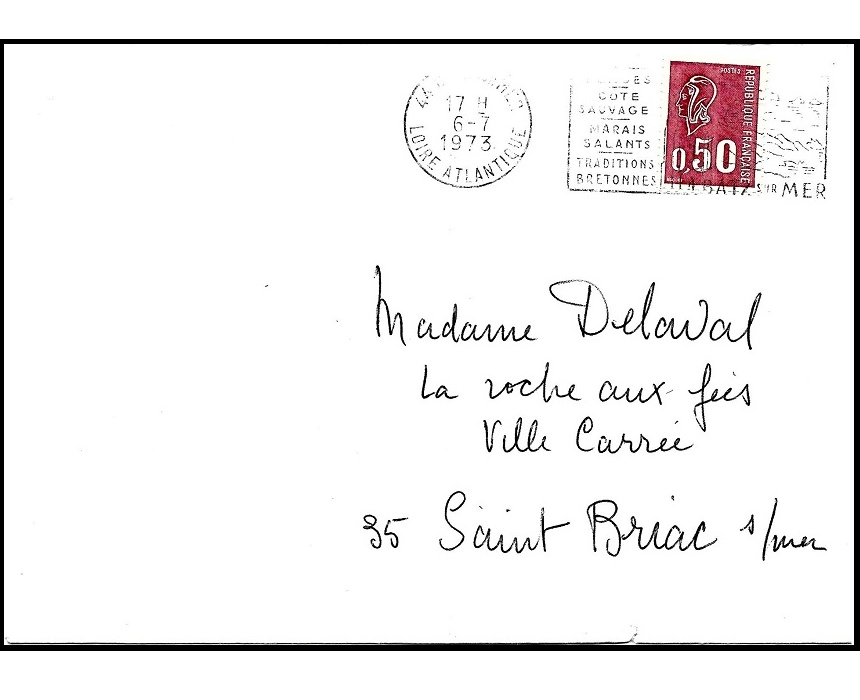
The above image shows a letter with a stamp with 3 phosphorescent bands stemming from a booklet of 10 stamps. On mouse-over , an enlargement of the stamp appears showing that the perforations of both horizontal edges are guillotined, which proves that the stamp comes from a booklet of 10 stamps.

The above image shows a letter with a stamp with 3 phosphorescent bands stemming from a booklet of 20 stamps. On mouse-over , an enlargement of the two horizontal edges of the stamp appears, showing that only the upper horizontal edge is guillotined, which proves that the stamp comes from a booklet of 20 stamps.
Withdrawal of stamps
Stamps from booklets were withdrawn from sale on 7 July 1978.
Coil stamps
Stamps without phosphorescent band
The first printing of this stamp took place at the beginning of 1971, on a bright neutral paper.
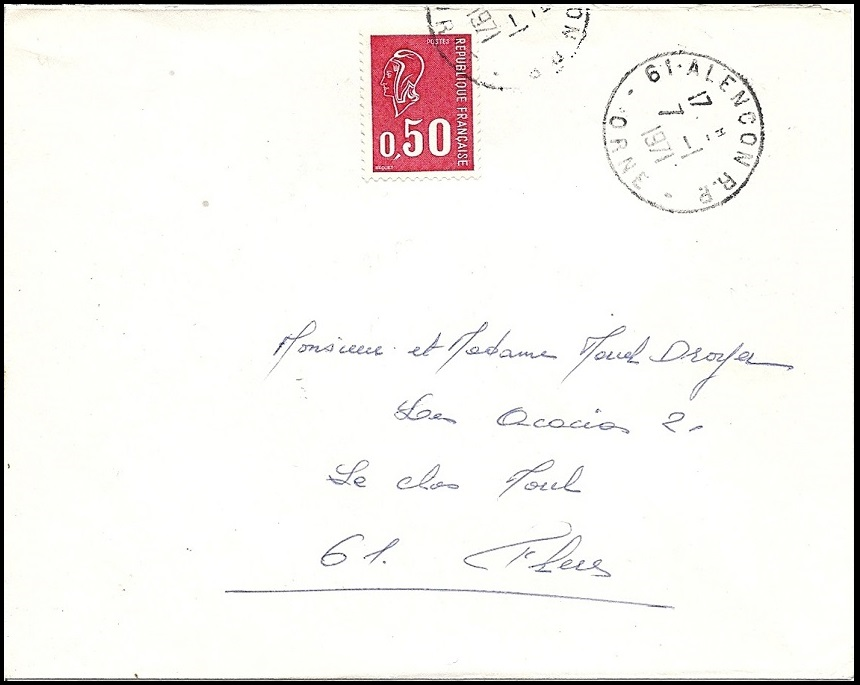
The above image shows a letter with a stamp without phosphorescent band stemming from a coil. On mouse-over, an enlargement of the stamp appears showing that the perforations of both vertical edges are guillotined, which proves that the stamp comes from a coil.
Stamps with 3 phosphorescent bands
The last printing (the fourth) of this stamp was made at the beginning of 1973, on a paper with optical whitener, with 3 type B phosphorescent bands.

Withdrawal of stamps
Coil stamps were withdrawn from sale on 7 July 1978.

